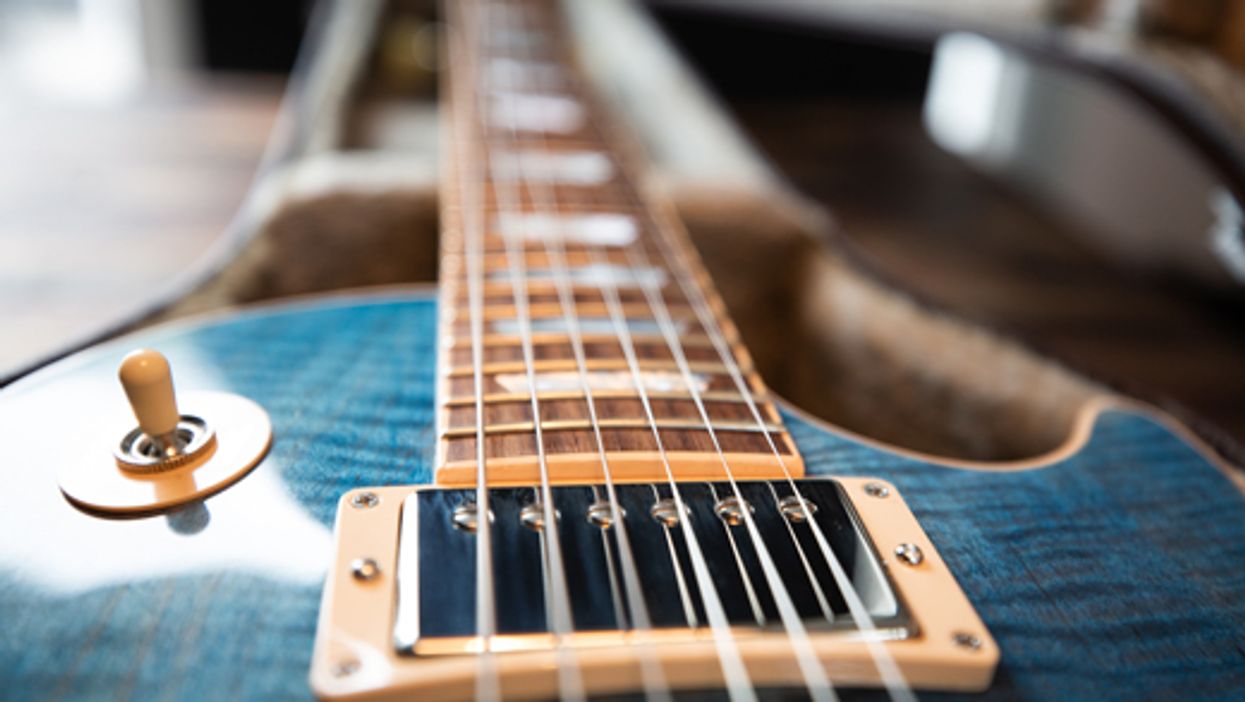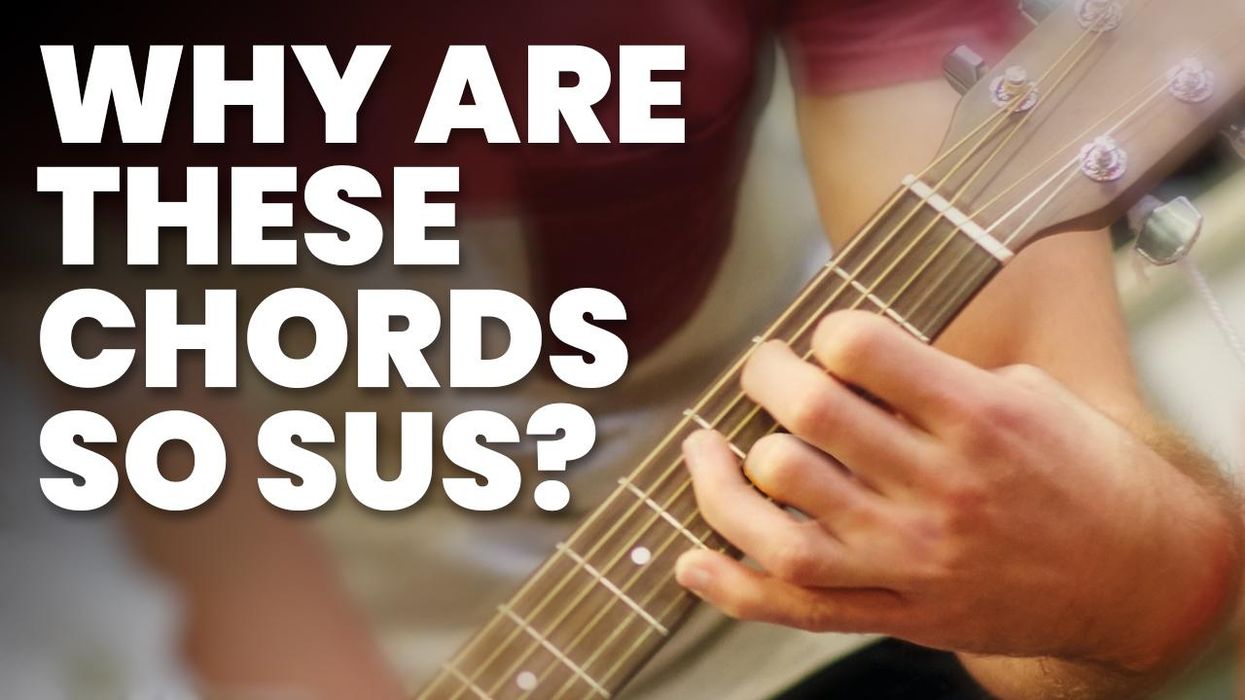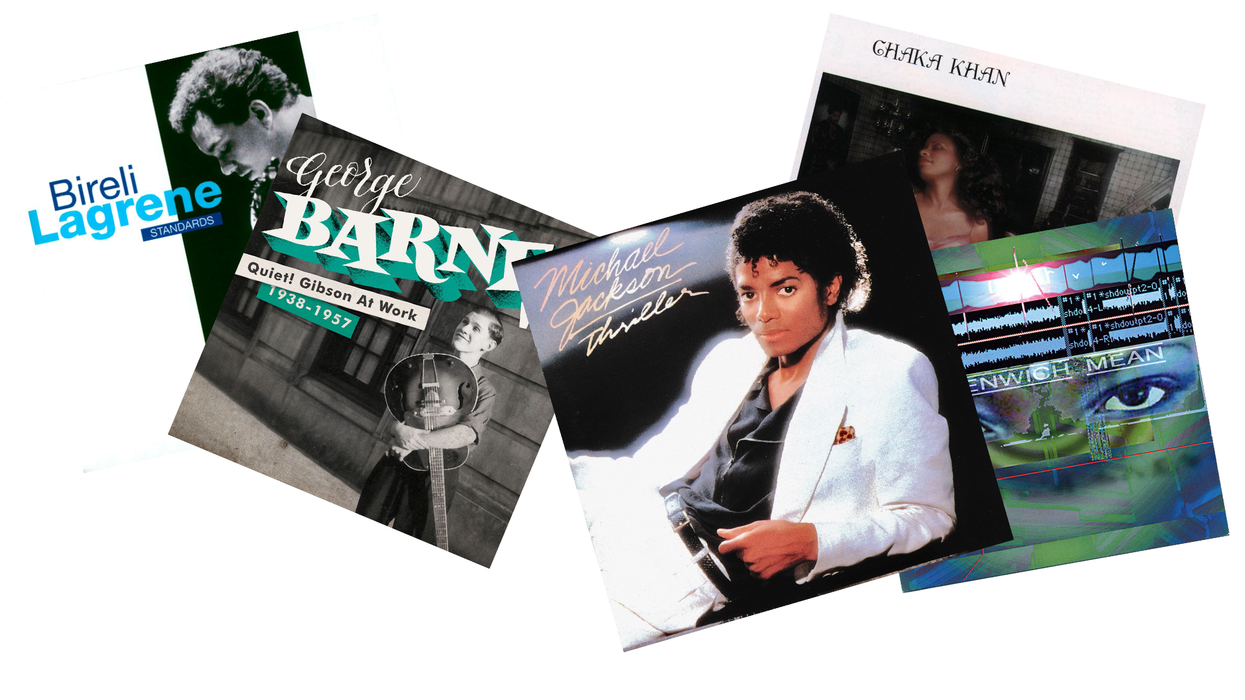Theory: Intermediate
Lesson Overview:
• Uncover the beauty of the major seventh interval.
• Learn how to apply parallel harmony over a whole-tone scale.
• Develop a better understanding of intervals. Click here to download a printable PDF of this lesson's notation.
Before we begin our slightly twisted foray into harmonic hysteria let me give you some quick “theory" regarding this lesson. When we refer to a double-stop, that simply means we're playing two notes at the same time. The interval within these double-stops could be a second, third, fourth, fifth, sixth, or seventh—nearly anything goes. For this lesson, however, we're going to focus on the major seventh interval, which is 11 half-steps—i.e., one half-step lower than an octave.
Warning!
To achieve the best effect, be sparing when using the major seventh interval to harmonize a line. It's a very
angular, “out" sound that's best employed for shock value. The following examples are way over the
top with the use of the major seventh. I did this purposely so you could hear and see many different ways to use
this interval in a single lesson.
The best way to harmonize a line is to start with a good line. I know this sounds obvious, but I've seen too many harmonies that don't work and don't swing because the basic foundation was weak. So, for each example, I want you to first listen and learn the basic riff before exploring the harmony.
Our first example is a riff played on a G blues (Ex. 1). You'll notice that the riff has all the characteristics that make up a good musical statement: style, repetition, harmony, and arc (beginning, middle, and end).
Click here for Ex. 1
Now that you've heard the riff, played it, and hopefully internalized it, let's check out the harmonized version (Ex. 2). I am doing a strict parallel harmonization of the line. This means that every note is harmonized with a note a major seventh below with no regard to the key (G) or the particular chord that's flying by. It's easy to see how important the original line needs to be because this creates some far-out sounds. A great thing about the dominant 7 chord is that every note can serve as some kind of extension. We could go through and analyze each note, but that's not really the point. Just make a strong riff and then put this crazy interval to it and see what happens!
Click here for Ex. 2
Let's continue using this wonderfully twisted interval on a whole-tone riff (Ex. 3). The chord changes for this two-measure ending are G9#5–F9#5–Eb9#5–D7b9–G7#11. This line is a great study in moving a symmetrical scale, such as the whole-tone scale, in tritones down the neck. Again, we use a strong line that works well on its own to create a harmonic and rhythmic vibe that carries through to a nice resolution.
Click here for Ex. 3
Once we add a major seventh below our original riff things get very interesting. We now have two lines a major seventh apart, or a minor second if you invert them (Ex. 4). For the first three chord changes, the top line is playing the 9, #5, and b5 (respectively), while the bottom line is playing the b3 (#9), 13, and 5. What's great is that this is all happening simultaneously. The top line wins out because our ear perceives it as the main melody. Once again you can see how important it is to start with a strong riff when playing double-stops—especially parallel double-stops.
Click here for Ex. 4
For the last two examples, I've toned down the craziness a bit. In Ex. 5, I'm playing a line over a chord progression that uses fewer dominant chords than the previous examples. The chord progression is in E major, and it starts with F#m–Eadd2/G#–Amaj7. The Eadd2/G# is functioning as a secondary dominant (E7) for the A chord. This sets up a nice feeling of resolution when we arrive at the tonic chord. On the third time we play the same changes, we push forward with another secondary dominant sound (F#add2/A#) to a suspended dominant 7 chord, A/B (B9sus4), which resolves eventually to a E69#11 chord. This progression is based on cool gospel church harmonies. The diatonic riff, while simple, still adheres to the principles of what constitutes a good line. It is both rhythmically and melodically repetitive, and it builds nicely and resolves well. It also uses the upper harmonic structures of the chords.
Click here for Ex. 5
Once we add the double-stops, the line really opens up (Ex. 6). You can especially hear the harmonic impact on the long tones in measures two, four, and eight. In measures two and four, we have the #11 and the 5, and in measure eight we have the 3 and 11.
Click here for Ex. 6
There is a lot of information to digest here. Once your fingers feel comfortable playing the major seventh intervals, take little riffs you know and apply this concept to them. It will tickle your listeners' ears and make people wonder, “How are you doing that?"
























